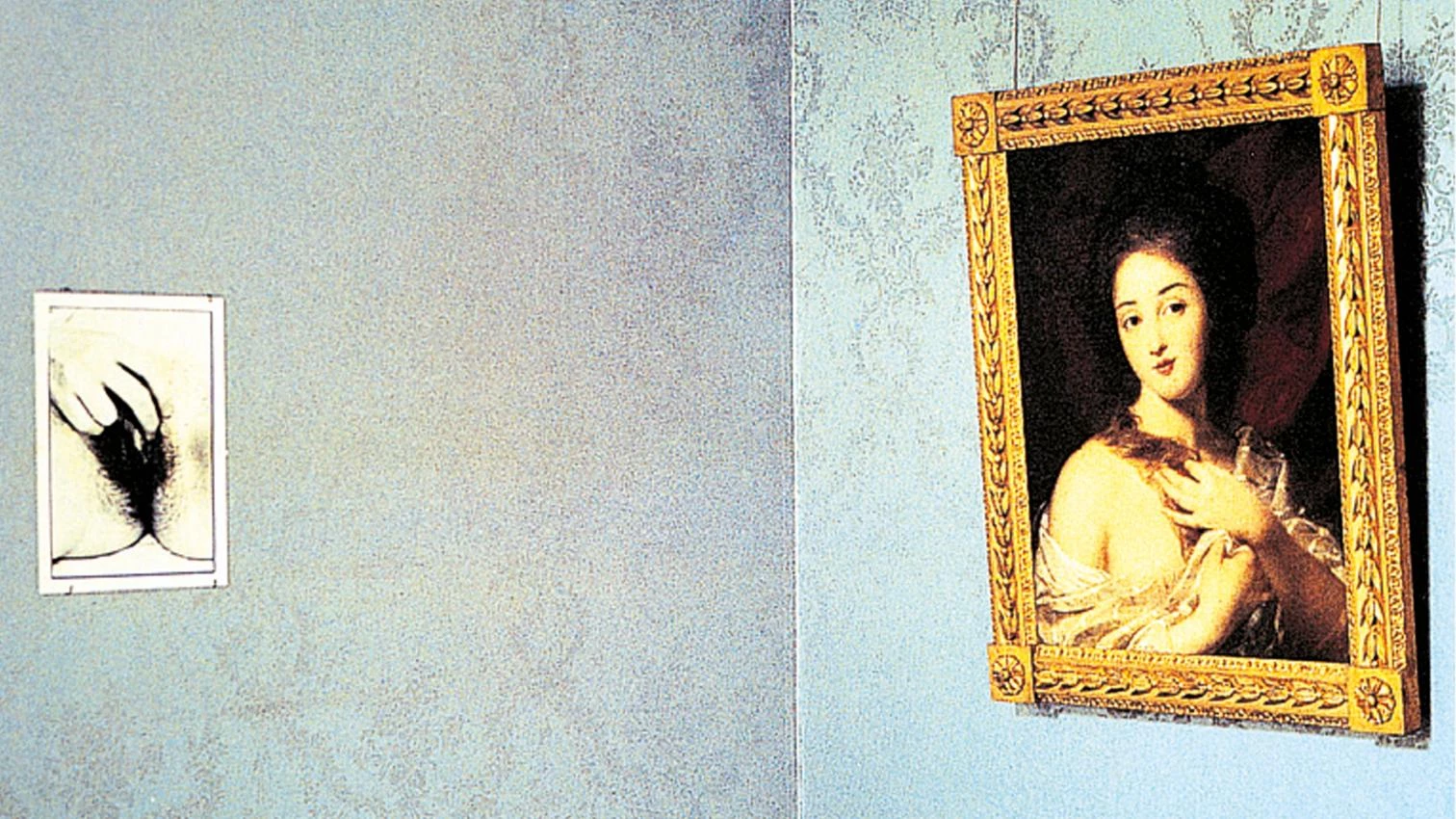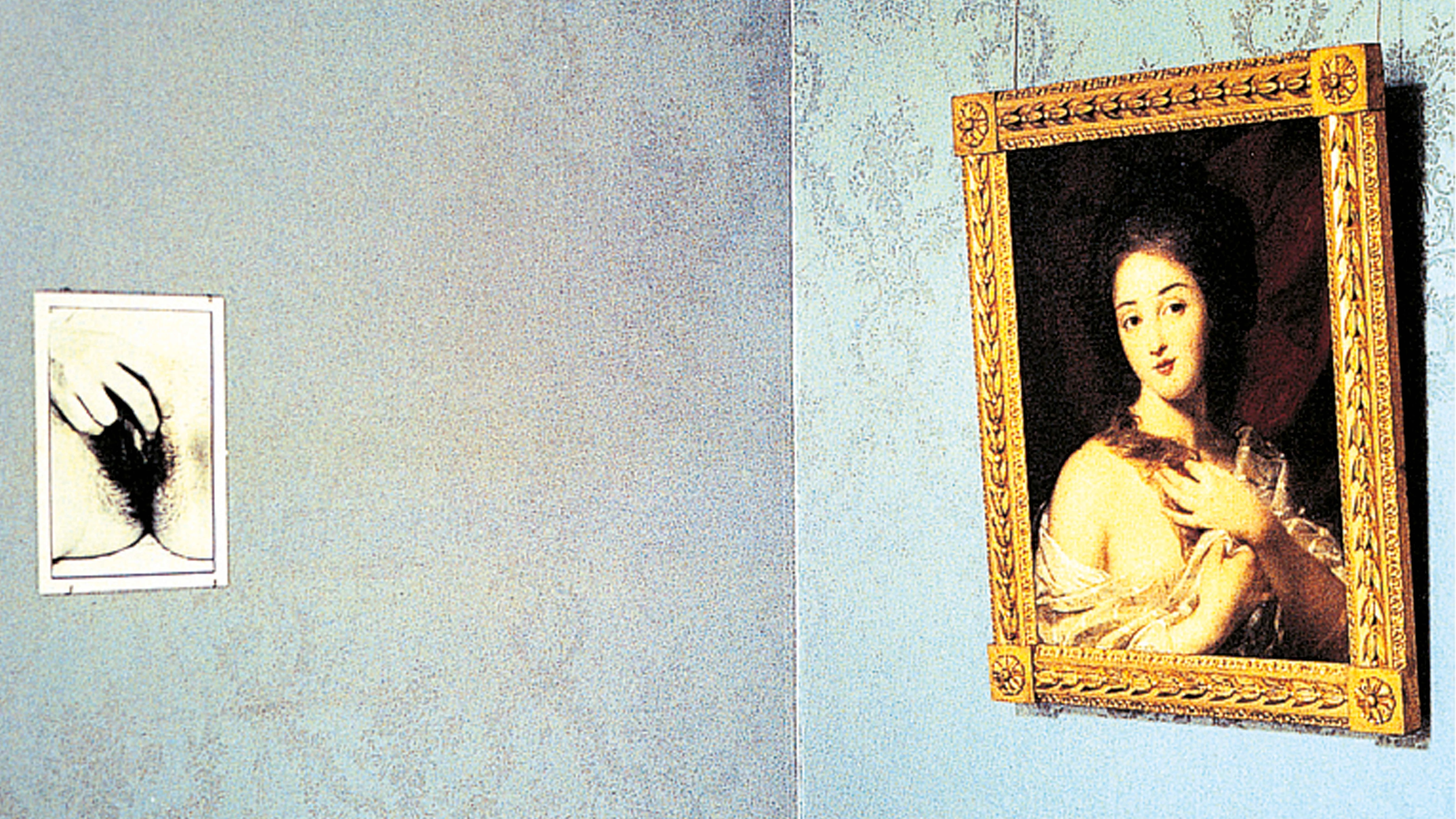
Zoe Leonard, Neue Galerie Installation, Documenta IX, 1992
The museum as space of the body gradually moves from the scandal of religion to the religion of scandal. If the stiff Christ of Holbein is trivialized within the comfortable context of the Basel museum photographed by Candida Höfer, the installation by Zoe Leonard contrasting female sexuality with period portraits or that of Gregor Zivic relating painting to fashion propose the use of the exhibit as an abrasive manifesto. The Sahzá advertisement suggests clothing with the label, warning that we consume brands rather than items, and the photographs by Fran Herbello extend the argument with violence: the label sown onto the skin and the body hanging from the peg evidence the masochistic submission to the strict discipline of fashion. The line tattoed on six paid backs and the figure wearing a bag as a hood depict two forms of servitude; when subordination to signature art or signature fashion is written on the skin, the brand becomes a vicarious sign of identity, and in the end it is undistinguishable with the most banal commercial use of the body. And the face decorated with ideograms is the loquacious front side of the bar code on the back of the neck: if the subject is a consumer object, then the skin is only a canvass for logos...[+]






